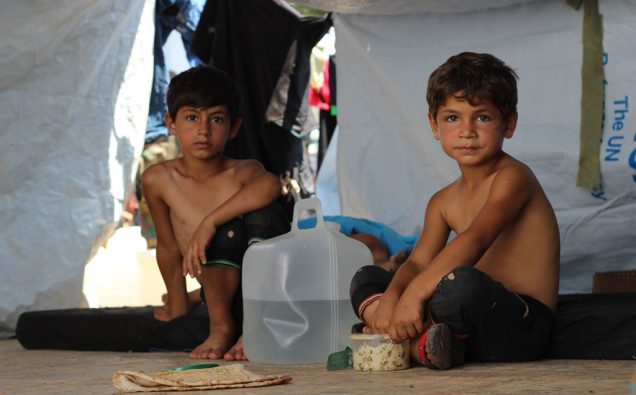
Nearly half a million dead. Cities emptied. Millions pushed out as refugees. Five years of death and destruction rained on the country. Aleppo buckles under siege. Captive people gasping for signs of life. A deal, though belated and flawed, is reached, and Bashar al Assad stops life-saving assistance from reaching the suffering people.
According to the United Nations, the ceasefire following last Friday’s Russia-United States agreement is largely holding but that desperately-awaited humanitarian convoys are unable to move due to a delay in getting permits from the Syrian Government.
“It is particularly regrettable because […] we are losing time,” Staffan de Mistura, UN envoy for Syria, told a press briefing in Geneva. “These are days which we should have used for convoys to move with the permit to go because there is no fighting,” he stressed, according to a UN statement.
The UN Office for the Coordination of Humanitarian Affairs (OCHA) terms Syria as one of the most complex and dynamic humanitarian crises in the world today. Some other details, as released by the UN, are terrifying.
Since March 2011, more than a quarter of a million Syrians have been killed and over one million have been injured. 4.8 million Syrians have been forced to leave the country, and 6.5 million are internally displaced, making Syria the largest displacement crisis globally.
In 2016, an estimated 13.5 million people, including six million children, are in need of humanitarian assistance. Of these 5.47 million people are in hard-to-reach areas, including close to 600,000 people in 18 besieged areas.
Envoy de Mistura said that the agreement between the US and Russia on the cessation of hostilities in Syria last Friday was a “game-changer” because violence has been reduced substantially.
Meanwhile, Jan Egeland, the Advisor to the Special Envoy, reiterated “the good news is that our people on the ground confirmed that the cessation of hostilities is largely holding, the killing has been greatly reduced, in fact no reports on civilian killings the last 24 hours. Attacks on schools, attacks on hospitals have stopped.”
“The bad news is that we are not using this window of opportunity so far to reach all of these places with humanitarian assistance, like we did when this humanitarian task force was born out of the February agreement on the cessation of hostilities,” he said.
In addition to eastern Aleppo, UN convoys, if they receive permits, are ready to go to places like Moadameya, to Al-Waer, to Talbiseh to Douma, to all of the besieged areas close to Damascus, close to Homs, and elsewhere, he explained.
The deal is “simple,” said Mr. Egeland: “Well-fed grown men, please stop putting political, bureaucratic, and procedural roadblocks [before] brave humanitarian workers that are willing to go to serve women, children, wounded civilians in besieged and crossfire areas.”
So what is the way out of Syria’s seemingly fathomless travails?
A piecemeal approach will clearly not bring peace to Syria. The international coalition must target all terror groups – ISIS, al-Nusrah, Hezbollah – and remove the symbol of state terror in Assad. Since there are so many regional – Saudi Arabia, Turkey and Iran – and international players, a political solution, accompanied by military action against all terror groups – under an impartial high-level overseeing United Nations team – may be the best option to lift Syrian civilians out of the sandpit of violence.









